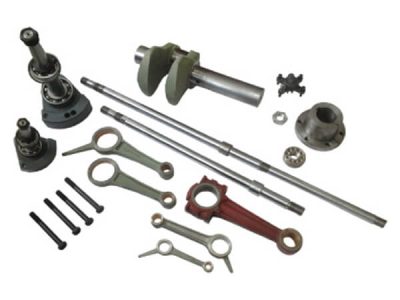Customer expectations are accelerating, and support teams need reliable systems that keep pace without sacrificing empathy. Automation has moved beyond simple scripts to orchestrated experiences that connect chat, email, voice, and back-end data in real time. When done well, these tools reduce friction for customers and remove repetitive work for agents, freeing them to handle complex issues. This article explores the practical ways automation raises efficiency and response quality, and how companies can measure the gains. You’ll see where AI fits, where humans must lead, and how partners like Hit Rate Solutions guide teams through the transition. Along the way, we’ll examine how to Automate Customer Service without losing the nuanced touch that earns long-term loyalty.
Integrating AI Chatbots and Smart Ticketing Systems
AI chatbots are no longer just front doors; they act as intelligent triage agents that capture intent, validate account details, and suggest next steps. When they integrate with smart ticketing systems, context moves with the customer so they never repeat themselves across channels. That continuity matters when a chat escalates to email or a callback, because the transcript, sentiment, and history are attached to the case. The result is faster case creation, more accurate categorization, and cleaner data for reporting. For teams working to Automate Customer Service, this integration model cuts downtime and maintains a unified customer narrative.
From Triage to Resolution Handoffs
A strong handoff is the difference between a seamless experience and a frustrating restart. With robust bot-to-agent routing, the system assigns cases based on skills, availability, and priority while surfacing relevant macros and knowledge articles. Agents don’t waste time gathering basics; they open the ticket with identity confirmed, prior steps recorded, and suggested actions queued. This keeps interactions focused on resolution and reduces handle time, especially for recurring issues like password resets, billing updates, and shipping status. By synchronizing chatbots, ticket fields, and workflows, teams preserve continuity that customers feel in shorter conversations and more accurate outcomes.
Reducing Response Times Through Automated Workflows
Speed is not just about answering quickly; it’s about removing the steps that slow everyone down. Automated routing places each request in the right queue the first time, while priority rules lift urgent cases to the top. Auto-acknowledgments reassure customers their message is received and set clear expectations for follow-up. Meanwhile, SLA timers, collision detection, and proactive reassignments prevent tickets from stalling when agents are unavailable. When companies Automate Customer Service in this way, first response time drops without compromising quality or compliance.
Designing Fast Lanes Without Cutting Corners
The best “fast lanes” pair automation with guardrails that protect accuracy and trust. For example, identity verification can run automatically in the background before an agent engages, removing manual checks and security risk. Pre-approved responses can be tailored by the system based on language, channel, and sentiment, but the agent still reviews the draft to ensure fit. Real-time deflection keeps routine questions out of queues by suggesting precise help-center articles and community answers the moment a ticket is created. These layered workflows create speed that’s sustainable, measurable, and easy to tune as volumes and customer behaviors change.
Balancing Automation and Human Personalization in 2025
In 2025, the most competitive service teams use automation to reduce effort, not warmth. AI handles recognition, recommendations, and repetitive tasks, while humans lead with judgment, empathy, and complex problem-solving. The key is orchestration: knowing when to escalate, how to provide context, and which tone to adopt based on customer history and sentiment. Personalization stems from data—purchase patterns, prior interactions, and channel preferences—woven into every step. Brands that pair automation with consistent voice and considerate timing deliver support that feels tailored, not templated.
Human-in-the-Loop Standards
A practical way to protect personalization is to define explicit human-in-the-loop standards. Teams can set thresholds for sentiment score, account value, or legal risk that trigger a human review before a message leaves the queue. Playbooks outline how agents should refine AI-generated drafts so language aligns with brand voice and the customer’s emotional state. Continuous feedback loops let agents flag misclassifications, propose better prompts, and curate knowledge that improves future responses. With advisory partners such as Hit Rate Solutions, organizations codify these standards and maintain the right balance between automation’s speed and the human finesse that builds loyalty.
Cost Efficiency and Accuracy in Digital Customer Service
Automation reduces cost per contact in two reinforcing ways: it handles high-volume, repetitive inquiries at scale and it prevents rework caused by mistakes. By verifying data automatically—order numbers, account status, warranty dates—systems catch errors before they reach an agent or the customer. That accuracy compounds as cleaner tickets flow through queues, cutting average handle time and reducing escalations. Meanwhile, conversational AI and guided workflows help new agents perform like experienced ones, shortening ramp-up and lowering training costs. The outcome is a support operation that runs lean without cutting corners on quality.
Where to Expect Compounding ROI
Savings accelerate when teams prioritize the right journeys for automation. Start with inquiries that are frequent, simple, and tightly bounded—returns eligibility, shipping updates, password resets—and expand as confidence grows. Over time, measure deflection rate, resolution time, and customer satisfaction to ensure gains are broad, not local, and that automation enhances rather than fragments experiences. For companies that Automate Customer Service across email, chat, and social, unified workflows and knowledge governance keep content consistent and current. These practices compound ROI by preventing duplication, avoiding channel silos, and ensuring every answer is both accurate and on brand.
Data-Driven Insights That Enhance Support Decision-Making
Modern support automation produces a rich stream of data that decision-makers can use to improve service and products alike. Intent detection and topic clustering reveal what customers are asking for—and what they struggle to do—across channels and regions. Sentiment analysis highlights moments of delight and friction, guiding training or product fixes with precision. Because chatbots and ticketing share context, leaders can trace issues end to end, from first contact to resolution, and isolate points of delay. The result is an evidence-based roadmap that ties operational metrics directly to customer outcomes.
Turning Signals Into Roadmaps
Insights become valuable only when they drive action, which requires clear taxonomy and ownership. Teams should align tags with business priorities—billing, onboarding, integrations—so trends translate into backlog items and measurable improvements. Dashboards that combine satisfaction, speed, and effort scores show whether changes deliver the intended customer impact. Product, marketing, and support leaders can meet regularly to close the loop, using transcripts and themes to guide fixes and content updates. With frameworks informed by experts like Hit Rate Solutions, organizations transform raw signals into decisions that elevate responsiveness and quality across the customer journey.
Common Automation Challenges and Solutions for Businesses
Automation fails when systems are brittle, content is stale, or data is trapped in silos. Bots can frustrate users if they misread intent, loop the same prompt, or block a path to a human. Routing rules degrade over time when new products or policies are introduced without updating workflows. Privacy and compliance risks emerge if integrations pass sensitive data without proper controls. These pitfalls are avoidable with thoughtful design and disciplined operations that Automate Customer Service responsibly.
Actionable Fixes That Stick
A durable program starts with iterative deployment, clear fallbacks, and steady training data refreshes. Teams can implement confidence thresholds that escalate to agents when the model is uncertain, and log every failure for review. Governance matters: version control on knowledge articles, regular reviews of prompts and macros, and checklists for launching new automation. On the human side, change management ensures agents trust the system by giving them a voice in tuning it and visibility into how it helps. This accountability loop keeps accuracy high and prevents the slow drift that undermines both customer trust and operational gains.
Scaling Customer Service Without Compromising Quality
True scale means handling more interactions, in more channels and languages, without diluting the experience. Automation enables that by standardizing the essentials—verification, routing, tone guidance—while leaving space for agents to personalize. As volumes rise, capacity models can predict staffing needs by channel and intent, and adjust proactively with scheduling and queue rules. Quality management evolves too, with AI-assisted evaluations that score consistency and flag risks for human review. By treating automation as an evolving platform rather than a one-time project, teams grow without losing coherence.
Playbooks for Sustainable Growth
Sustainable growth starts with clear playbooks that specify when to extend a workflow, localize content, or add channels. Leaders can set quality gates—like minimum satisfaction or resolution thresholds—before expanding coverage to new regions or segments. Regular calibration sessions bring analysts, trainers, and frontline agents together to review data and refine messages so tone stays human while operations scale. Investing in reusable components—integrations, prompts, and templates—speeds expansion and ensures changes ripple consistently across touchpoints. Organizations that apply these disciplines, often with guidance from Hit Rate Solutions, build a support engine that scales gracefully while protecting the response quality customers expect.









Comments